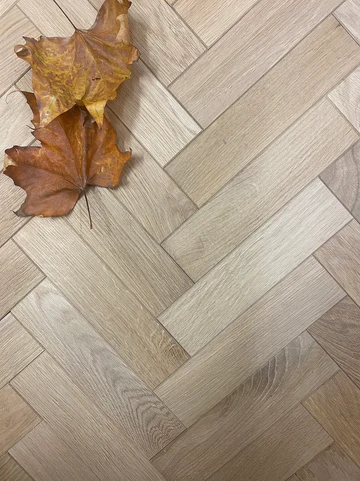Parquet flooring has been a symbol of timeless elegance and sophistication for centuries. Originating from France in the 17th century, this exquisite flooring option has evolved into a versatile choice for modern interiors. From classic hardwood designs to innovative engineered options, parquet flooring offers a blend of aesthetic appeal and practicality that suits various interior styles and preferences.
What is Parquet Flooring?
Parquet flooring is a type of wood flooring composed of small pieces of wood arranged in geometric patterns. These patterns can range from simple squares to intricate designs like herringbone or chevron. The individual wood pieces, or blocks, are typically made from hardwoods such as oak, maple, or walnut, although modern variations may include engineered wood or laminate materials.
Types of Parquet Flooring
Solid Wood Parquet
Solid wood parquet consists of 100% hardwood blocks, providing exceptional durability and natural beauty. It can be sanded and refinished multiple times, making it a long-lasting investment for homeowners.
Engineered Wood Parquet
Engineered wood parquet features a top layer of hardwood veneer bonded to several layers of plywood or high-density fiberboard (HDF). This construction offers increased stability and resistance to moisture, making it suitable for areas prone to humidity fluctuations.
Laminate Parquet
Laminate parquet replicates the look of real wood through a photographic layer sealed with a protective coating. It is highly durable, scratch-resistant, and budget-friendly, making it a popular choice for residential and commercial spaces. Also check out solid wood flooring Uk.
Vinyl Parquet
Vinyl parquet combines the aesthetic appeal of wood with the durability and water resistance of vinyl. It comes in a variety of styles and colors, offering versatility in design and easy maintenance.
Advantages of Parquet Flooring
Parquet flooring offers several benefits that make it a preferred choice for homeowners and designers alike:
- Aesthetic Appeal: The intricate patterns and natural beauty of wood enhance the visual appeal of any space, adding warmth and character to interiors.
- Durability: With proper maintenance, parquet flooring can last for decades, retaining its beauty and integrity even in high-traffic areas.
- Easy Maintenance: Regular sweeping and occasional mopping are usually sufficient to keep parquet floors looking pristine, minimizing the time and effort required for upkeep.
- Versatility in Design: From classic to contemporary, parquet flooring comes in various patterns, finishes, and colors to complement any décor style or architectural theme.
Installation Process of Parquet Flooring
The installation of parquet flooring involves several steps to ensure a flawless finish:
Subfloor Preparation
Before installation by wood flooring uk, the subfloor must be clean, level, and dry to prevent issues such as unevenness or moisture damage. Any existing flooring material should be removed, and subfloor imperfections should be addressed.
Glue-down Installation Method
In this method, adhesive is applied directly to the subfloor, and individual parquet blocks are glued down one by one. This technique ensures a strong bond and stability, especially for solid wood parquet.
Floating Installation Method
Floating installation involves interlocking the parquet blocks without the use of adhesive, allowing the floor to “float” over the subfloor. This method is suitable for engineered wood or laminate parquet and offers quick and easy installation.
Nail-down Installation Method
In traditional nail-down installation, parquet blocks are secured to the subfloor using nails or staples. This method provides stability and structural support, particularly for solid wood parquet.
Maintenance Tips for Parquet Flooring
To preserve the beauty and longevity of parquet flooring, consider the following maintenance tips:
- Regular Cleaning Routines: Sweep or vacuum the floor regularly to remove dust and debris, and mop with a damp cloth or hardwood floor cleaner as needed.
- Avoiding Moisture and Direct Sunlight Exposure: Keep the floor dry and protect it from excessive moisture, as prolonged exposure can cause warping or damage. Use rugs or curtains to minimize direct sunlight, which can fade the wood over time.
- Repairing Scratches and Dents: Address minor damage promptly by using touch-up kits or wood filler to fill in scratches or dents. For deeper damage, consider sanding and refinishing the affected area.
Comparing Parquet Flooring with Other Flooring Options
When choosing flooring for your home or business, consider how parquet flooring compares to alternative options:
- Hardwood Flooring: While both hardwood and parquet flooring offer natural beauty and durability, parquet’s distinctive patterns add a unique touch to interiors.
- Laminate Flooring: Laminate flooring is more affordable and easier to install than parquet, but it may lack the authenticity and longevity of real wood.
- Tile Flooring: Tile flooring is durable and water-resistant, making it suitable for areas prone to moisture, but it may lack the warmth and elegance of wood.
Environmental Impact of Parquet Flooring
As sustainability becomes a priority for many consumers, the environmental impact of flooring materials is a key consideration:
- Sustainability of Wood Sources: Choose parquet flooring made from certified sustainable wood sources, such as Forest Stewardship Council (FSC) certified forests, to support responsible forestry practices.
- Eco-friendly Production Processes: Opt for manufacturers that prioritize eco-friendly production methods

